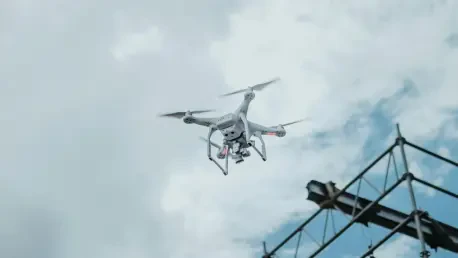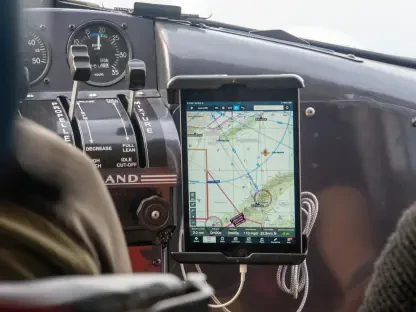In an era where technology shapes nearly every industry, a quiet yet contentious shift is happening in the world of property insurance, raising serious questions about homeowner rights and personal privacy. Imagine receiving a notice from an insurance provider threatening to cancel a policy based on images of a home taken from the sky, without any prior warning or consent. This scenario is becoming increasingly common as insurers turn to aerial surveillance and drone imagery to evaluate properties for underwriting decisions. A notable case involving a homeowner from Kane County, Illinois, has brought this issue into sharp focus, highlighting the tension between technological efficiency and personal privacy. As companies embrace these tools for cost-effective assessments, many are left wondering whether such practices cross ethical boundaries. This growing trend demands a closer look at how aerial inspections are reshaping the insurance landscape and what they mean for consumer protections.
The Rise of Aerial Surveillance in Insurance
The adoption of aerial imagery by insurance companies marks a significant departure from traditional on-site inspections, driven by the promise of speed and reduced costs. High-resolution photos captured via drones or satellite services like Google Earth allow insurers to assess property conditions, such as roof damage or structural issues, without ever stepping foot on the premises. Industry proponents argue that this method provides a safer, more efficient way to gather data, often identifying risks that might go unnoticed during physical visits. For insurers, the ability to analyze multiple properties in a short time frame translates into more accurate pricing models and quicker policy decisions. However, this technological leap also raises concerns about transparency, as many homeowners remain unaware that their properties are being scrutinized from above. The lack of direct communication leaves policyholders vulnerable to sudden mandates, often with significant financial implications, prompting debates over fairness in the application of these tools.
Beyond efficiency, the unregulated nature of aerial surveillance in the insurance sector has sparked unease among consumer advocates. A homeowner might be blindsided by a demand to repair or replace property elements based on images they’ve never seen, with no clear process to challenge the findings. Take the case of a Kane County resident who faced an $18,000 roof replacement ultimatum after an insurer cited “granular loss” detected through aerial photos. Such situations reveal a troubling gap in oversight, where insurers can conduct evaluations at any time without notifying the property owner. Critics argue that this practice not only undermines trust but also risks inaccuracies due to the limitations of remote imagery, which may misinterpret normal wear as critical damage. As this technology becomes more widespread, the absence of standardized guidelines continues to fuel friction between the industry’s push for innovation and the need to safeguard individual rights.
Homeowner Challenges and Industry Defense
For many homeowners, the use of aerial inspections feels like an intrusion, especially when decisions based on these images lead to costly demands or policy cancellations. The frustration is palpable when individuals are forced to contest findings they weren’t informed about until a notice arrives. In the Illinois case, the homeowner’s battle with a major insurer underscored the emotional and financial toll of such disputes, as the threat of losing coverage loomed large over an expensive repair. After filing a complaint with state authorities and gaining media attention, the insurer eventually reversed its stance, renewing the policy without conditions. This outcome illustrates the power of advocacy and regulatory intervention in holding companies accountable. Yet, it also highlights a systemic issue: not every homeowner has the resources or knowledge to navigate these challenges, leaving many at a disadvantage when facing similar ultimatums.
On the other side of the debate, insurance providers defend aerial inspections as a necessary evolution in a competitive industry. Representatives from major firms, alongside trade organizations like the Insurance Information Institute, emphasize that these methods are less intrusive than traditional inspections, eliminating the need for scheduling visits or entering private property. They argue that aerial data enhances their ability to assess risk accurately, ultimately benefiting customers through tailored premiums and proactive identification of potential hazards. While acknowledging concerns about privacy, insurers maintain that the technology prioritizes efficiency and safety, often capturing information that protects both parties in the long run. Nevertheless, the lack of clear communication about when and how these inspections occur remains a sticking point, as transparency could bridge the gap between industry intent and consumer perception.
Balancing Innovation with Consumer Protections
As aerial surveillance becomes a staple in property assessments, the insurance industry stands at a critical juncture where innovation must be weighed against ethical considerations. The benefits of streamlined evaluations and data-driven decisions are undeniable, but they come with the risk of alienating customers who feel their privacy is being compromised. Consumer advocates stress the importance of establishing regulations that mandate notification before aerial inspections occur, alongside accessible avenues for homeowners to review and dispute findings. Without such frameworks, the potential for misuse or misinterpretation of imagery looms large, threatening to erode trust in an industry already scrutinized for its practices. Striking a balance requires collaboration between insurers, policymakers, and advocacy groups to ensure technology serves as a tool for fairness rather than a source of contention.
Looking back, the resolution of disputes like the one in Kane County offered a glimmer of hope for homeowners caught in the crosshairs of aerial assessments. Reflecting on these events, it became clear that individual action, supported by state resources, played a pivotal role in challenging unfair mandates. Moving forward, policyholders were advised to stay proactive by requesting photographic evidence from insurers and filing complaints with regulatory bodies when discrepancies arose. Staying informed about the technologies shaping insurance evaluations also emerged as a key step in safeguarding personal interests. Beyond individual efforts, the broader call for regulatory oversight gained momentum, urging the creation of guidelines to govern how aerial data was collected and used. These measures, if implemented, promised to redefine the relationship between insurers and homeowners, ensuring that technological advancements aligned with the fundamental principles of transparency and accountability.









